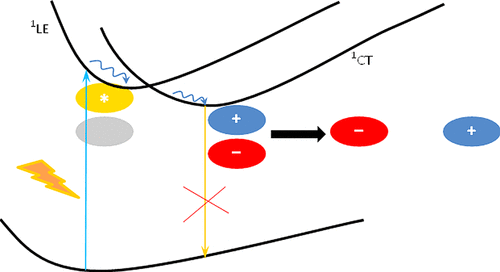Theoretical Study of Charge-Transfer Exciplexes in Organic Photovoltaics
By A. Ya Freidzon, N. O. Dubinets, and A. A. Bagaturyants
The photogeneration of charges in bulk heterojunction organic photovoltaics is of crucial importance in the mechanism of charge separation. This results in the formation of both locally excited and charge-transfer exciplex states. While the former states are prone to radiative or nonradiative recombination, the latter ones can have a sufficiently long lifetime. In this work, the formation of charge-transfer exciplex states in pairs of PC61BM (acceptor) with different oligothiophenes (donors) is studied theoretically using density functional theory. The ground and excited states of three oligothiophene–PC61BM complexes are studied. It is found that the intensively absorbing state is localized on the oligothiophene. Another excited state is localized on PC61BM, being characterized by only slight absorption. The charge-transfer (CT) excited state of the complex lies either below or slightly higher than the locally excited (LE) states. The latter case is unfavorable for charge separation. Criteria for the efficient formation of charge-transfer exciplexes are found, and the possibility of oligothiophene modification to facilitate the formation of such exciplexes is explored. Shifting the donor absorption to the near IR, which is important for organic solar cells, is another goal of oligothiophene modification. A modified oligothiophene satisfying these two criteria is proposed. The structure and radiative lifetimes of the LE and CT states and also the binding energy of the CT states with respect to their dissociation into a radical cation and a radical anion are calculated. It is demonstrated that the lifetime of the CT exciplexes is sufficiently long to accomplish charge separation.

